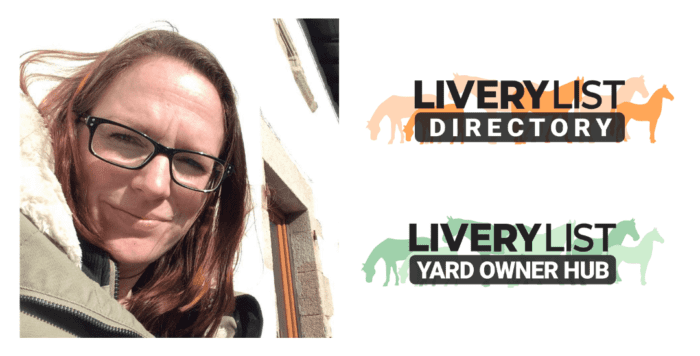Our Livery Yard Insurance team understand that running a livery yard is a business, and like any business, it's essential for yard owners to evaluate its profitability.
In this blog, Cheryl Johns, Owner and Founder of LiveryList and the Yard Owner Hub, covers one often overlooked aspect that can affect earnings - the unintentional loss of income due to liveries helping each other, or freelance grooms and instructors providing services on the yard.
Many yard owners offer additional services beyond their standard livery packages. These can include holiday cover, instruction, schooling, clipping, or general services such as holding a horse for the farrier.
Yard owners typically charge for these "bolt-on" services, but often don't realise that allowing others, whether liveries or third-party providers to assist in these ways can eat into their income. For example, in livery packages like Assisted DIY, where additional services are a key part of the package, this can have a significant financial impact.
Loss of Income
Every service that the yard owner doesn’t provide is a missed opportunity for revenue.
Liveries helping each other with tasks such as turnout or holiday cover may not always involve money changing hands, but the yard owner still misses out on potential income. This could also apply to freelance instructors who come to the yard to teach liveries, using the yard's facilities, which can further cut into the yard owner’s bottom line. Yard owners should consider every aspect of their operation to ensure they are minimising costs and charging appropriately.
Insurance Considerations
Prior to a service provider arriving at the yard, the livery yard owner should ask for verification of their insurance and a copy of their appropriate qualifications or accreditations.
It is a good idea to take a copy of these to retain on a file along with their contact details recorded on a form, and even as far as getting them to sign a disclaimer that confirms their insurance details, familiarity with the yard, skill level, and contact information in case any issues arise.
Regardless of the service they are providing, or by whom their services are appointed by, any professionals providing their services on the livery yard should have the correct Riding Instructor Insurance, Groom Insurance or Equine Specialist Insurance, and be suitably experienced and qualified for the services they are offering or the potential advice they are giving.
It is important for those providing services to hold a Professional Liability Insurance policy and if appropriate, a policy extension covering Care, Custody, and Control (CCC). This means that if their actions cause injury, loss or damage to the livery yard owners’ property, or any people or equines on the yard, then there is the possibility for a suitable recourse of action to recoup any associated losses.
It is also a good idea to ensure that all client’s on the livery yard have at least Public Liability Insurance.
Health and Safety
It’s important to ensure that service providers are qualified and experienced for the work they're doing. Since the livery yard owner is essentially allowing the service provider to operate on their premises, the livery yard owner therefore has a level of responsibility for ensuring their competence.
The livery yard owner should undertake their own risk assessments, ensuring that anyone offering services on the yard is aware of potential hazards and how to mitigate them.
Additionally, biosecurity measures, such as hand washing and cleaning equipment between horses, should be enforced, especially if service providers visit multiple yards or handle various horses throughout the day.
Implementing Changes on the Yard
It’s becoming more common for yards to require that any holiday cover or additional services be handled in-house. While this may not be popular with liveries who have used outside providers, explaining the rationale behind these rules - such as better control over who is on the yard, ensuring proper insurance and qualifications, and maintaining the welfare of the horses can help clients understand the need for these restrictions.
When it comes to instruction and schooling, while it can be difficult to charge liveries who are already paying to use the facilities, introducing a small fee for sole use of the arena during lessons with an external service provider can be a compromise. While this may increase the cost of lessons slightly, it is often cheaper for liveries than having to travel elsewhere for instruction.
Final Thoughts
Taking a close look at how your livery yard operates and identifying areas where you're losing potential income is crucial for maintaining a profitable business.
By clearly communicating any changes and outlining the pricing structure for additional services, you can ensure that both you and your clients are on the same page, ultimately benefiting your business and the services you offer.
When considering any changes to your business, it is important to ensure you contact your insurance provider to discuss any implications this may have to your insurance policy to make sure you remain fully protected.
About the author

Cheryl Johns, SEIB Equestrian Business Writer and the founder of LiveryList and the Yard Owner Hub, is a qualified and experienced yard manager, marketing advisor and business consultant with experience across a range of industries.
About SEIB
SEIB have been arranging livery yard insurance and riding school insurance for over 60 years. This experience allows us to tailor policies to suit your circumstances and ensure that you and your horses are covered should the worst happen.